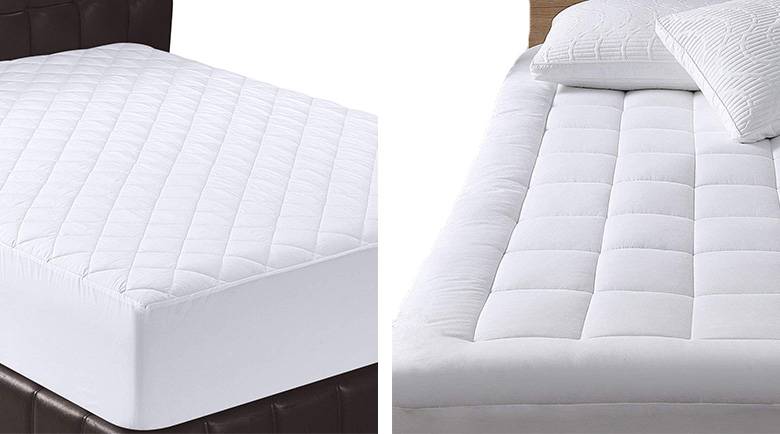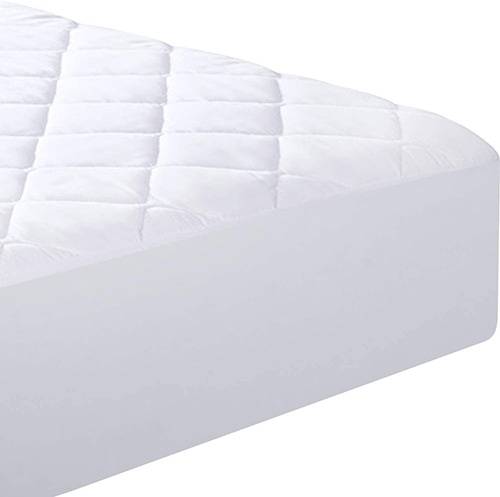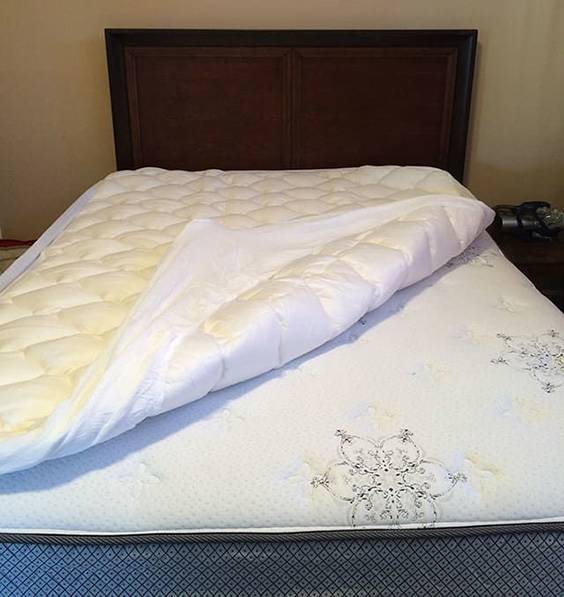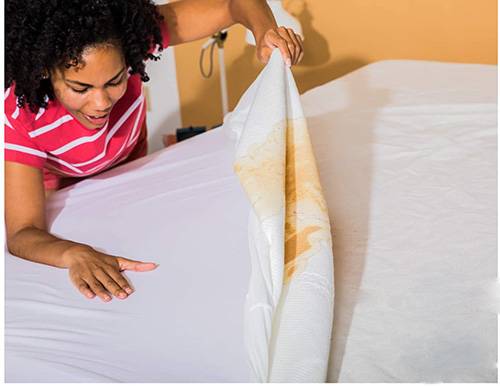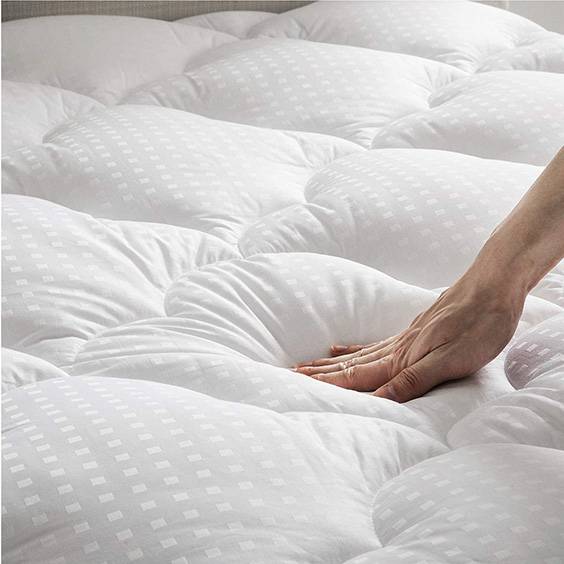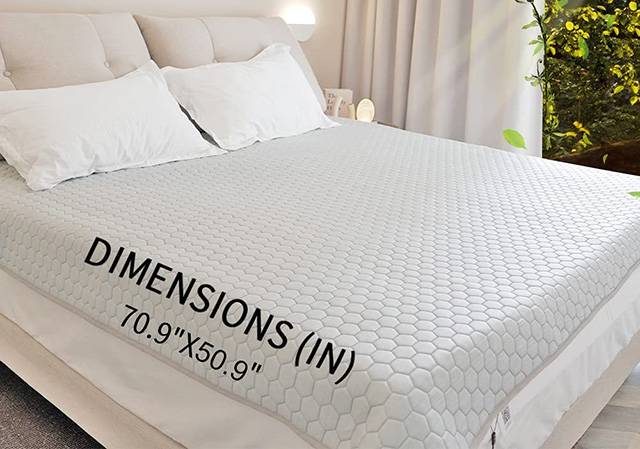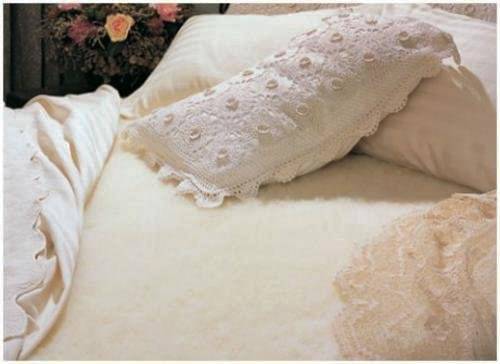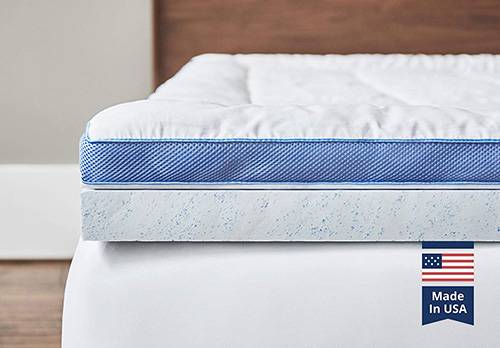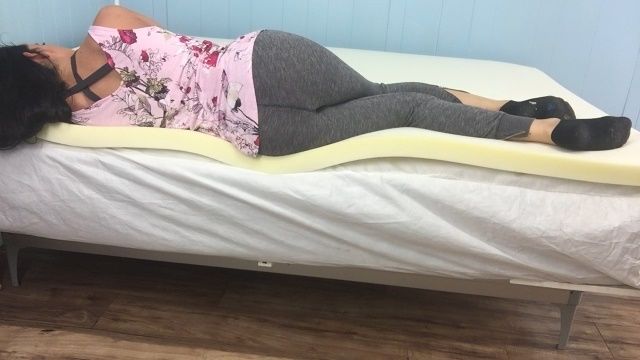Let’s face it: We live in a convoluted world. If you thought figuring out your taxes was bad, just wait until you enter the world of bedding. We have sheets and blankets, comforters and duvets, mattress pads and mattress toppers, and all sorts of other tomfoolery. Today, we’ll be zoning in on the topic of mattress pads. So, what exactly is a mattress pad and what is it used for?
Mattress Pad vs. Mattress Topper
The first thing we’ll talk about is the difference between a mattress pad and a mattress topper. These two bedding components are both used for similar purposes, though there are slight contrasts to keep in mind when shopping.
- Thickness: The main difference between a mattress pad and a mattress topper is the thickness of the material. A mattress pad is thinner, while a mattress topper is thicker.
- Purpose: While a mattress pad is typically used to add a layer of plushness to one’s mattress, a mattress topper is used to give the sleeper a different overall feel (firmer or softer) than what the mattress offers.
Both mattress pads and mattress toppers can serve double-duty as a mattress protector—one less thing you’ll have to buy.
More About Mattress Pads
A mattress pad is a bedding item that you place atop your mattress. You can normally secure it via an elastic band (like the one on your fitted sheet) or straps/loops that go around the mattress corners.
As mentioned, a mattress pad can serve two essential functions:
- Adding a thin layer of extra cushioning to your mattress
- Acting as a makeshift mattress protector
A Closer Look at Mattress Pads
— Cushioning
You might want to purchase a mattress pad for yourself if your mattress is firmer than you’d like. This might be the case if you have a low body weight (and thus require more cushioning to stay comfortable while sleeping) or experience aches and pains during the night.
In addition, a mattress pad can serve as a solid short-term solution to an old mattress you plan to replace soon. Just situate the mattress pad atop your bed and voila! You can easily squeeze a few more months out of it for under a hundred bucks.
Keep in mind that mattress pads intended for comfort-related purposes tend to be a bit thicker than those used primarily for protection. You can also find models that employ special features such as cooling gel foam that helps keep you cool and regulate your body temperature during the night.
That said, they’re still thinner than mattress toppers—for the ultimate comfort enhancement, you should opt for the latter.
— Protection
Bedding is gross. And yes, that includes your mattress.
Bacteria, dust mites, sweat, dead skin cells—and who knows what else—end up making contact with your mattress at some point. And that’s not all your mattress has to face. We all know that eating cookies or sipping red wine in bed happens sometimes, and it doesn’t always end well.
While designated mattress protectors do exist and are readily available on the market, they have one key issue: noise. As the diligent mattress protectors they are, they’re made using a waterproofed plastic material (usually polyurethane, PVC, or vinyl). While the plastic does an awesome job of keeping the mattress dry and clean, it produces little crinkly noises…every single time you move in bed. No thank you.
If you prefer sleeping in blissful silence, a mattress pad is a good alternative.
You can find mattress pads specialized in combatting the most common issues:
- Spills
- Allergens
- Bedbugs
Before buying, read the packaging or product description to make sure the mattress pad will protect against everything you need it to.
— Materials
Mattress pads are available in a range of materials, and each one has its pros and cons depending on your needs. Here’s a quick breakdown of what you can expect.
Cotton
Cotton is an extremely popular material used in bedding items, and you can find mattress pads made with a cotton shell, a cotton fill, or both. For a comfortable material that’s soft yet durable (not to mention machine-washable), cotton is a great choice.
Polyester
Polyester is another popular bedding material, especially known for being an inexpensive (and hypoallergenic) alternative to cotton or other natural materials. In the case of mattress pads, some people enjoy polyester fill for its similarity in feel to feathers or down—why spend a fortune on feathers when there’s a cheaper substitute? But while a polyester mattress pad will be easy on your wallet, it’s not the best mattress pad material as it becomes lumpy and loses its comfort over time.
Wool
You might call wool a luxury material of sorts, especially as it’s used in bedding items like mattress pads. This material is soft, thermoregulating (keeps you cool in summer and warm in winter), has excellent insulation, wicks away moisture, and is both hypoallergenic and antimicrobial. It’s like comfort and cleanliness rolled into one super-cozy mattress pad. Of course, you can expect a higher price tag to be attached to a wool mattress pad!
Latex
Made from rubber trees and naturally hypoallergenic, latex is a great material option for a mattress pad. This material is known for its high level of support (making it perfect for those with arthritis or similar conditions) and has a durable build that will last years. But no material is perfect, and latex has two major cons: 1) those allergic to latex cannot use mattress pads containing it, and 2) it can feel a bit stiff to lay on.
Memory Foam
Memory foam mattress pads are similar to those made from latex in that they offer a high level of support and are quite durable. They also tend to be more comfortable than latex overall! However, memory foam is rather expensive and is not a great option for hot sleepers or those who experience night sweats.
Feathers
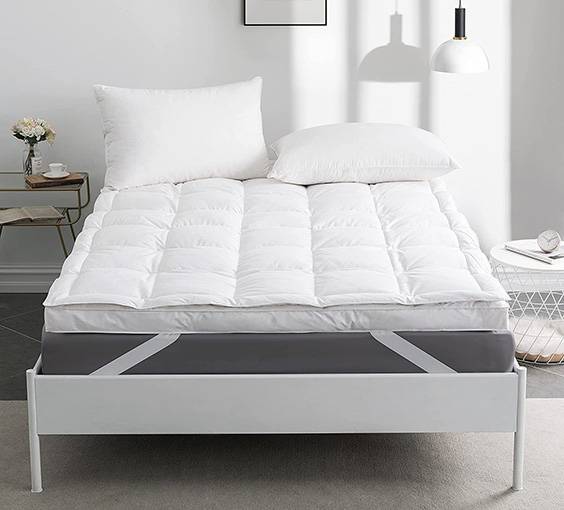
Conclusion
If your mattress is getting up there in years, not as soft as you’d like it to be, or could use a little extra protection without the crinkliness of a mattress protector, you should definitely consider getting a mattress pad. We hope this article provided you with the information you need to decide and to make the best possible mattress pad purchase for yourself.
Do you have any experience sleeping with a mattress pad? What advice or tips would you give to those shopping for one for the first time? Until next time, here’s to better sleep!
